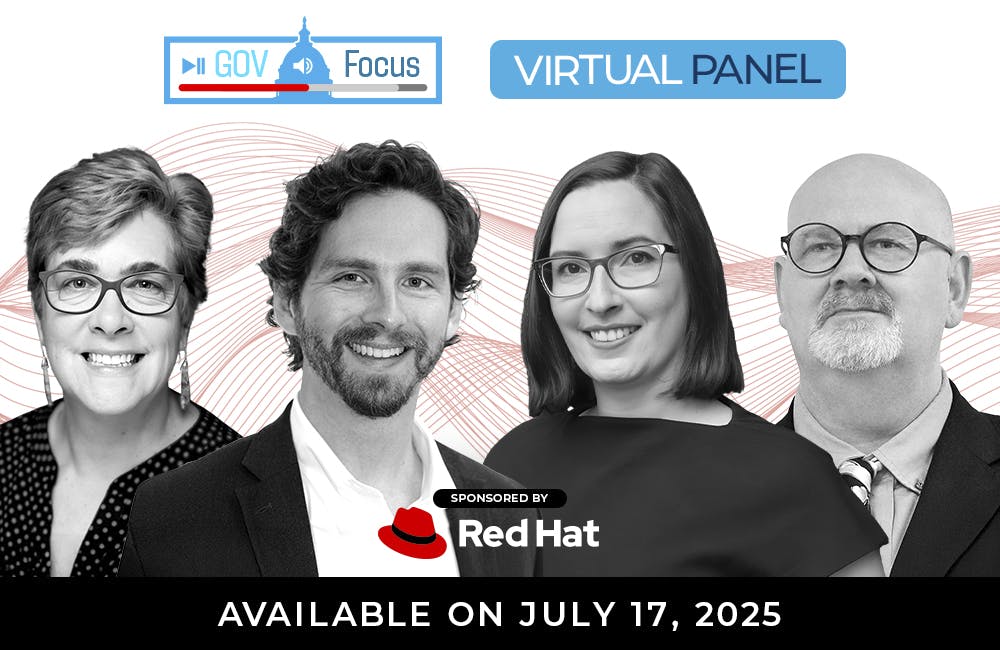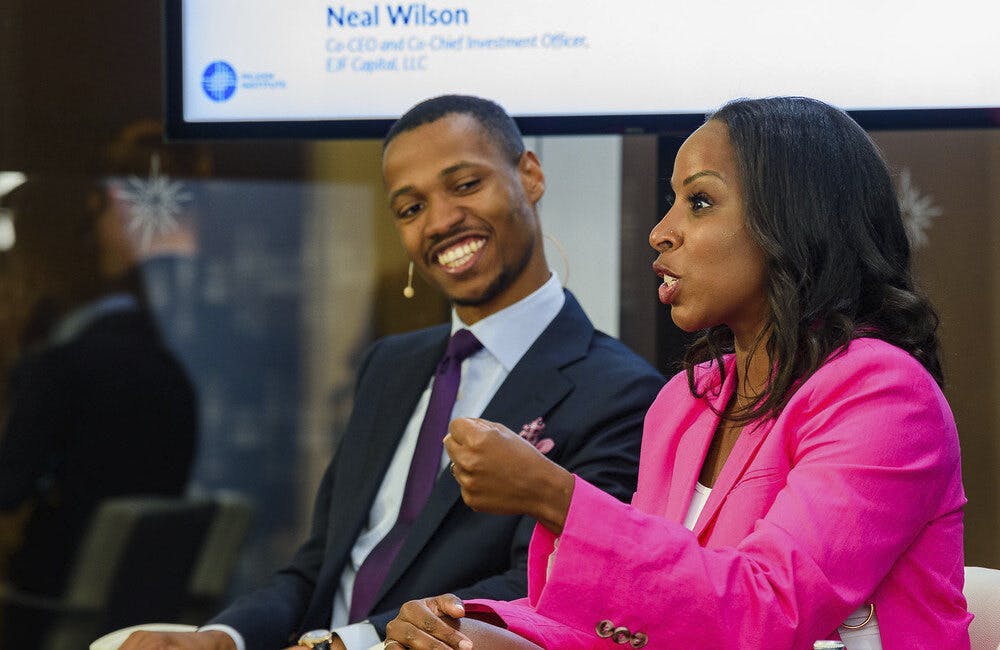NSF CIO’s Recipe for Innovation Success

At the National Science Foundation, technological innovation is everywhere — from slithering, snake-like robots to bioengineered cells that serve as digital signal processors. After CIO Dorothy Aronson experienced many trials and errors with her team’s innovation efforts — and through some inspiration drawn from famous French chef Julia Childs — Aronson developed a recipe federal agencies can use to create their own innovation success.
Start With an Important, Identifiable Problem
Agencies must clearly define an issue and their goal to solve it, said Aronson during Broadcom’s 2019 Mission to Modernize event last week.
The problem Aronson’s team wanted to tackle, as she described, involved whether AI could be used in the NSF’s system to support the proposal process. NSF had difficulty finding external emerging science field experts to conduct unbiased peer reviews for proposals received from the general research community.
Aronson strongly believed AI could make this selection process simpler by using “existing data sources” to break down proposals into “essential elements” — creating the raisin from the grape, as Aronson said. AI could filter information about the proposal to identify the field experts best suited to review them, she said. Those names would then be delivered to program officers for further consideration, planning and communication outreach.
Have Confidence the Problem Can be Solved
“Julia [Childs] would’ve said, ‘The only real stumbling block is fear of failure,’” Aronson said. She was confident that herself and others would find a solution.
Outline Problem Statement as a Hypothesis
Make sure that the important problem is doable. If it fails, then it demonstrates the agency was able to try, which opens the opportunity for it to try again to solve the problem.
“We said, ‘Over the course of the next two years, can we either insert artificial intelligence into our systems and prove that we can do it, or fail to do it?” Aronson explained. “Either way, we’ve proven the hypothesis that we can try.”
The Serving Size is the Whole Agency
“Don’t pick a problem that’s just an HR problem or just an IT problem,” said Aronson. “It has to be so clear and so moving that people who aren’t being paid to implement the solution are willing to do it because it’s so painful to not have a solution.”
Aronson provided further directions for any team at any agency to tackle.
- Commit yourself to the problem: Although management buy-in is helpful, Aronson clarified that when you are willing and truly commit yourself to solving a problem, cost shouldn’t be a major deterrent. After her request to fund the AI project was denied by her higher-ups, Aronson found her own way to solve the problem for free. Although there were implementation costs, the solution didn’t require taking money from an existing resource or receiving any additional money, she said.
- Engage volunteers with a taste for the issue: Sometimes people are already engaged with a specific issue and have tested their own ways to solve it, Aronson said. However, those solutions may not be agency-wide, and you have to organize those people to work together toward a solution.
- Try something tiny: Aronson said to “mix people up.” For example, have volunteers try small things they would normally work on, such as an Excel data solution, and pair those people with other volunteers, such as a programmer or a person with another segment of the solution, she suggested. Aronson called these microprojects, and her team comprised of 20 volunteers.
- Share, compare, and combine ideas and results: After completing the microprojects, her team would review results and reflect, asking questions such as, “What did we learn?”
- Repeat the previous two steps: Her team tweaked what they did and reiterated the process, which resulted in quicker, improved results. After six months, they managed to successfully complete their AI project, significantly reducing their projected two-year completion date.
- Update the recipe and create items, such as documents, showing others how to implement their projects: Aronson said volunteer writers helped communicate how AI could help in the reviewer selection process and addressed any potential misunderstandings.
Aronson also noted her recipe serves as a starting point for agencies to update and make their own, since agencies should adopt innovative processes that best fit their needs.
She also cautioned that teams should move on when finished. “The hardest thing about the project, really, was to move on once we finished,” Aronson admitted.
To continue solving problems creatively, she suggested teams break apart and start again. “If you become a group that iterates — that stays together — you get stale. You become the thing you were fighting against to begin with,” she said. Although Aronson’s team underwent a second round of quick implementation, they broke apart to start fresh, new groups. Now members from the original team are part of “many others” working on exciting, innovative projects at NSF, she said.
Finally, the people involved on a project must be excited about their roles in the project’s process.
“If the project gets to the end, and the people who were participating in it didn’t enjoy the process, then it’s not worth it,” Aronson said, because each team member plays a special part contributing to the project’s overall innovation success.
This is a carousel with manually rotating slides. Use Next and Previous buttons to navigate or jump to a slide with the slide dots
-

Data Transparency Essential to Government Reform, Rep. Sessions Says
Co-Chair of the Congressional DOGE Caucus Rep. Pete Sessions calls for data sharing and partnerships to reduce waste and improve efficiency.
5m read -

DOD Turns to Skills-Based Hiring to Build Next-Gen Cyber Workforce
Mark Gorak discusses DOD’s efforts to build a diverse cyber workforce, including skills-based hiring and partnerships with over 480 schools.
20m listen -

AI Foundations Driving Government Efficiency
Federal agencies are modernizing systems, managing risk and building trust to scale responsible AI and drive government efficiency.
40m watch -

Trump Executive Order Boosts HBCUs Role in Building Federal Tech Workforce
The executive order empowers HBCUs to develop tech talent pipelines and expand access to federal workforce opportunities.
3m read -

Navy Memo Maps Tech Priorities for the Future Fight
Acting CTO’s memo outlines critical investment areas, from AI and quantum to cyber and space, as part of an accelerated modernization push.
5m read -

DOD Can No Longer Assume Superiority in Digital Warfare, Officials Warn
The DOD must make concerted efforts to address cyber vulnerabilities to maintain the tactical edge, military leaders said at HammerCon 2025.
4m read -

New NSF Program Cultivates the Future of NextG Networks
The agency’s new VINES program looks to tackle key challenges like energy efficiency and future-proofing wireless tech.
21m watch -

Marine Corps Operation StormBreaker Slashes Software Delivery Timelines by 17x
New program aims to deliver critical digital capabilities to warfighters at the "speed of relevance" by overhauling traditional processes.
4m read -

Tracking CIOs in Trump's Second Term
Stay informed on the latest shifts in federal technology leadership as new CIOs are appointed and President Trump's second term takes shape.
6m read -

DHA CDAO Spearheads Master Data Catalog to Boost Transparency
Jesus Caban plans to boost DHA's data maturity through a new master data catalog, governance frameworks and inventory of tech tools.
5m read -

IHS Prepares to Deploy PATH EHR at Pilot Sites in 2026
IHS targets PATH EHR pilot in 2026, emphasizing governance, collaboration and interoperability as key pillars of the modernization strategy.
4m read -

Trump Orders Spark Government-Wide Acquisition Overhaul
As Trump pushes for a faster, simpler procurement system, agencies are leveraging AI and adapting strategies to meet new requirements.
5m read
















